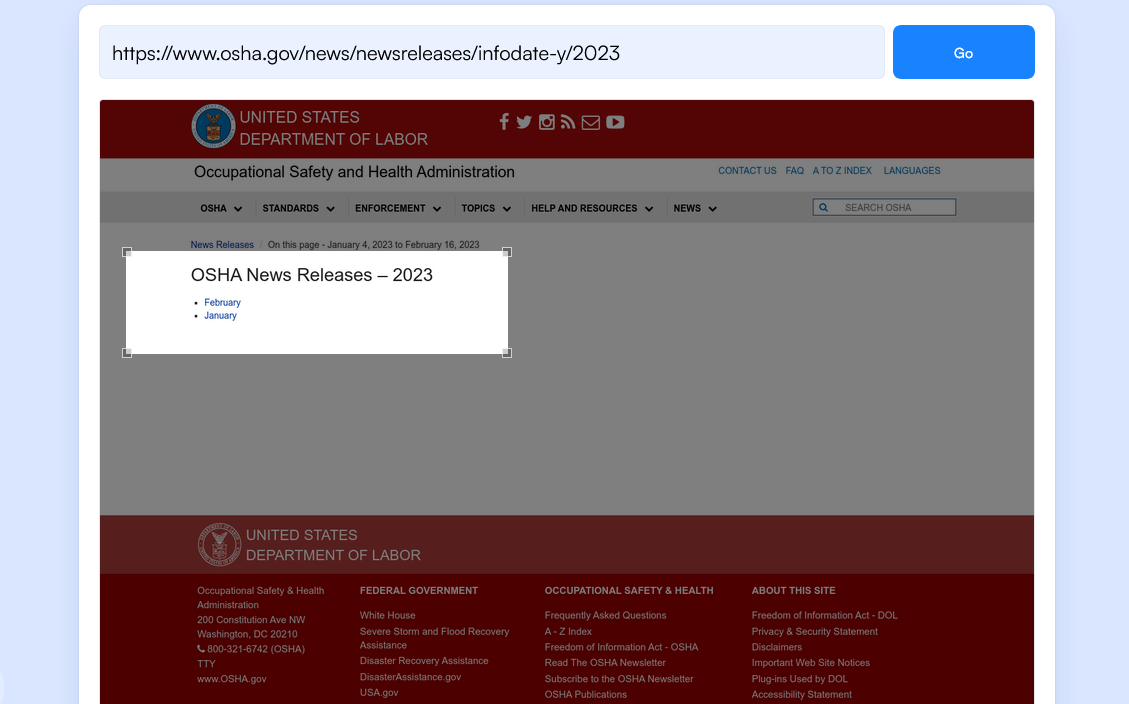A Comprehensive Guide to Regulatory Change Management
By Emily Fenton
Updated February 27, 2023

Regulatory Change Management: Developing a Strategy & Process
Change is constant. Regulations evolve rapidly with key developments that impose new requirements and compliance risks for organizations across the globe — whether you’re aware of these updates or not.
The goal of regulatory change management is to stay on top of changing regulations, so you can implement them efficiently and strategically across your organization to minimize compliance risk.
The more prepared you are with a strategy for monitoring regulatory updates, the easier and more seamlessly your team is able to understand current expectations, and implement changes company-wide.
Regulatory change management has always been a manual effort. But now, with the simultaneous explosion of the internet and heightened regulatory standards, using software tools to automatically monitor regulatory changes is becoming a common time-saving tactic.
Visualping is a simple and user-friendly regulatory tracking software that allows you to monitor any website with AI - such as government and regulatory body sites in your industry

When a web page change occurs, Visualping automatically notifies you with an AI-generated summary, distilling the update in 2 to 3 lines, and a screenshot of the page, with the changes highlighted.
What Is Regulatory Change Management?
Regulatory change management is the process of both keeping track of industry-relevant regulations, and integrating these new requirements into your organization to mitigate compliance risk.
Depending on your industry and the exact requirements relevant to you -- a couple of the most common regulatory examples being the GDPR or HIPAA -- regulatory change management can quickly become complex. Especially when updates come in various forms, such as black letter laws, government agency updates, publicized speeches and blogs. They're also published across many different types of media -- government and regulatory websites, news articles and social media posts.
Ultimately, regulatory compliance is about protecting consumers, businesses and the economy at large. Failing to comply not only poses the risk of embarrassing news coverage and damage to your reputation and brand, but hefty fines, lawsuits and even the termination of your business.
As such, institutions need to implement robust regulatory change management processes -- and that starts with monitoring regulatory changes from web sources relevant to your industry and organization.
Regulatory Change Management: Developing a Process and Flow
To create a solid regulatory change management process, you need to incorporate these key steps.
Anticipating and Tracking Regulatory Changes
It starts with knowing when a regulatory update, relevant to your organization, has occured.
Changes to regulations are usually announced preemptively by state, national and international regulatory bodies responsible for overseeing the industry. Some of the most heavily regulated industries include the finance and banking industries.
Keeping tabs on the regulatory web pages relevant to your industry or organization can either be a manual or automated process.
Manually Monitoring Regulation Changes
Historically, regulatory change management has very much been a manual effort.
Compliance teams were responsible for manually tracking changes to various web pages at once — think manually searching for certain websites -- sometimes several times a day, depending on the urgency of the update -- and Excel-based tasks.
A dedicated employee or compliance team, typically with legal knowledge, would spend their time – often hundreds of hours – trailing the regulatory internet, and manually filling spreadsheets. It’s a slow, laborious process, prone to human errors and not the best use of highly skilled employees’ time.
The more effective and efficient approach is an automated one — one in which technology carries out the labour intensive, manual work, and leaves highly trained individuals to do the analysis, critical thinking and high-value work.
Automating Regulatory Change Monitoring
Visualping
Due to the sheer volume of state, federal and international regulatory changes arising in short periods, it’s difficult to manually verify all the relevant web sources your business needs in order to know what's going on.
And, depending on how urgent the update, sometimes your organization needs to know about the regulatory change as soon as possible.
Updates on any forthcoming changes are announced publicly online, usually on government regulatory agency websites. Visualping is an example of a tool for automating this research process.
With Visualping, you can automatically monitor any web pages on the internet you want, allowing you to track the exact information impacting your business. You can also scale up your monitoring by tracking any number of web pages.
When a web page change occurs, you and your team can get notified via email, or in popular messaging apps, like Slack and Microsoft Teams. The notifications include a screenshot or snippet of the page changes, highlighted for you to view.
Determining How the Changes Will Impact the Organization
Analysts determine how new regulatory changes may impact your company. Some of these areas affected include:
- Whether new policies are needed
- What changes to current procedures are needed
- Whether you should increase oversight
- Whether any other important changes to ensure compliance are needed
Your company does not have to reinvent the wheel when it comes to implementing new policies and procedures. There are many systems already in place to help you make sure you’re staying compliant.
For example, an established personally identifiable information (PII) system ensures you are verifying the identities of your customers while staying in compliance.
Updating Policies Within the Company
Updating policies within your company is not light work. Instead, this step in the change management process usually involves your legal team as well as your compliance department, if you have one.
When you update company policies, you want a robust, organized paper trail in case you have to show proof of your work to auditors. The FCA, in fact, has publicly noted disappointment in past deficiencies in reporting.
Because of this, you should consider documenting:
- What changes are suggested by your compliance or legal teams
- Who is going to be responsible for implementing the changes
- Why you have chosen to follow one route versus another route
If your company is audited for compliance, you will have documentation supporting your company’s efforts to stay updated on and in compliance with regulatory changes.
Implementing Changes to Ensure Compliance
Once your company has determined which changes need to be made to your policies, practices, and procedures, it’s time to implement them! The employees responsible for implementing the changes will have regulations of their own which they must abide by in order to be held accountable throughout the process.
During the implementation process, you should monitor your team closely to ensure there is total internal adherence to the new compliance strategies. The failure of even one employee to abide by compliance regulations exposes your company to serious risks.
How to Use Visualping to Set Up Regulatory Content Feeds for Change Management
Visualping is a system that monitors website changes. It’s powerful enough to check any online page for changes or additions.
You can use Visualping to create a regular ongoing feed of content regarding regulatory news and changes.
Some of the sources of regulatory intelligence include:
- Business consultant companies in your industry
- Regulator and official government websites
- Magazines, journals, and other digital publications written by experts in your industry
Here’s how you can use Visualping to track a page and get immediate notification of any changes once they occur.
Step 1: Copy the URL You Want to Track, Then Paste It into the Search Field on Visualping’s Homepage
Be specific with the URL you want to track. For example, suppose that you wanted to track a particular page on the CFPB’s website; it isn’t enough to type “consumerfinance.gov” into the search bar. Instead, you must choose the exact URL of the page you’re interested in.
Step 2: Select the Area of the Page You Want to Monitor
If you don’t want to monitor changes to an entire webpage, you can select a certain amount of text by highlighting the text with your cursor.

Step 3: Decide How Often You Want Visualping to Check the Page for New Changes
You can set monthly or quarterly notification reports so that you aren’t inundated with daily or weekly updates.
Step 4: Enter the Email Address Where You Want to Receive Change Notifications
Be specific here, too. Enter the email of the person whose clear responsibility it is to stay updated on these changes.
Step 5: Check Your Email to Complete the Signup Process!
Check your email to confirm, and the signup process is complete!
Implement Visualping into Your Regulatory Change Management Flow Today
Most of the many steps to a solid regulatory change management process involve complex and moving pieces. Fortunately, your team can use Visualping to simplify one important step: staying updated on online changes. Sign up for Visualping today.
Get regulatory updates -- straight from the source.
Sign up with Visualping to get alerted of regulatory changes from anywhere online.
Emily Fenton
Emily is the Product Marketing Manager at Visualping. She has a degree in English Literature and a Masters in Management. When she’s not researching and writing about all things Visualping, she loves exploring new restaurants, playing guitar and petting her cats